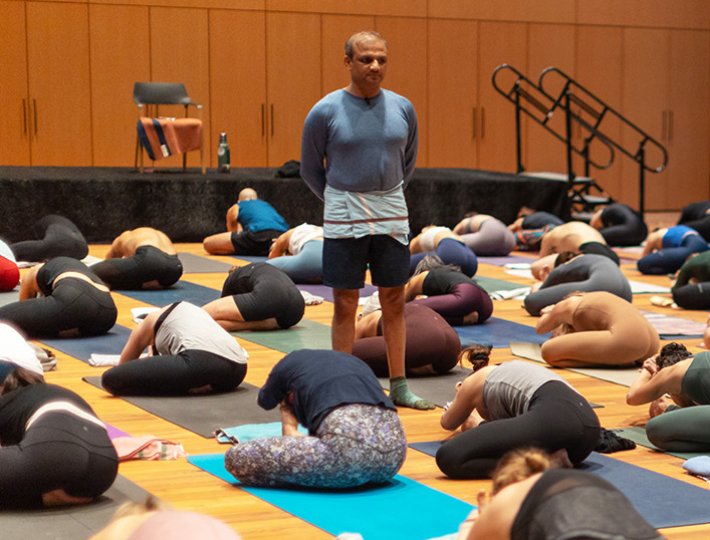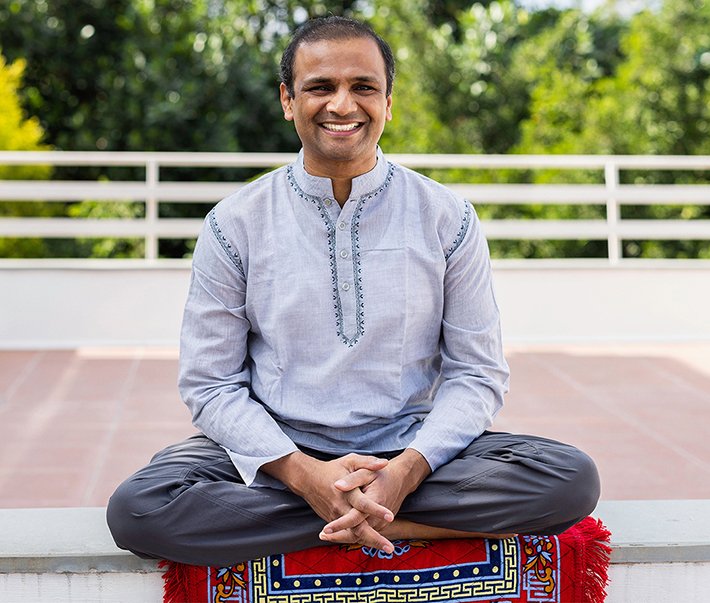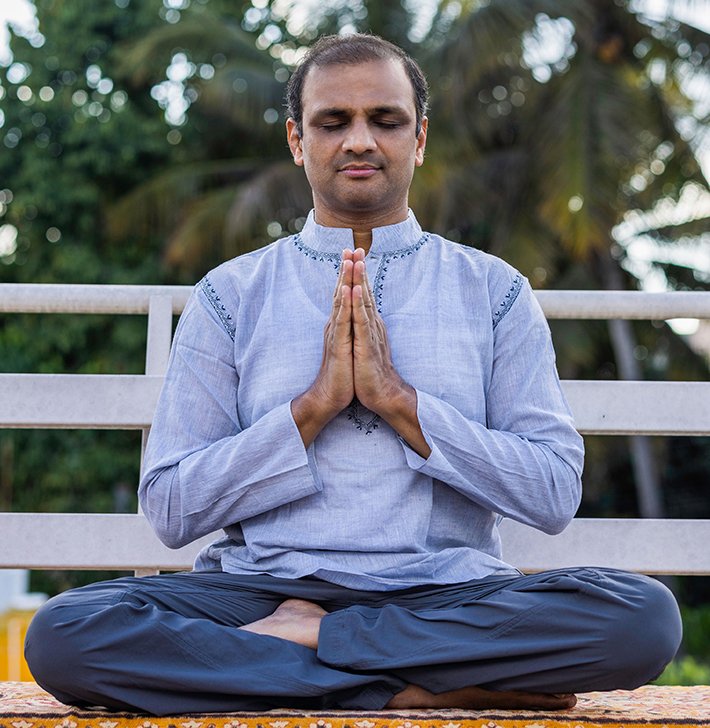Breathing is something few of us think about. Our inhales and exhales are controlled by the autonomic nervous system, meaning our body regulates them automatically to keep us alive. But that doesn’t mean we are all breathing correctly. In fact, 10 to 25 percent of Americans experience dysfunctional breathing habits, according to the book Breathe Well, Be Well. Abnormal breathing patterns can compromise health and performance, which may result in physical effects such as asthma, anxiety, stress, panic disorder with or without agoraphobia, other phobias, hyperthyroidism, migraine, chronic inflammatory joint disease with chronic pain, and more.
Those who do yoga or meditate know firsthand how powerful mindful breathing can be on and off the mat. Pranayama, the practice of breath regulation, can help calm the nerves, clear the mind, and tangibly alter one’s emotional and physical state. Proper breathing is such a potent force that the dedicated study of breath is emerging, thanks in part to the Graduate School of Breathing Sciences, which opened its doors in Cheyenne, Wyoming, in 2013. It is the first educational institution of its kind offering a master’s of science degree in applied breathing science. The program is taught by 15 faculty members, and the curriculum combines physiology, biochemistry, neuroscience, psychology, behavioral science, counseling, and technology from around the world (from Hawaii to Israel). Together, practitioners, educators, and consultants are hoping to address dysfunctional breathing habits and improve the health and performance people through the application of behavioral learning principles to breathing physiology.
Here, top experts share a few key techniques for taking control of your airflow and using it to perform your best in every situation.
1. When you’re…sitting, walking around, or doing just about anything.
Try This: Give it the old 1-2
With his ability to hold his breath underwater, you could be forgiven for thinking that four-time World Freediving Champion Stig Severinsen is part dolphin. But then, dolphins hold their breath only for about 10 minutes underwater, while Severinsen has twice held his for longer than 20, including one hold that lasted 22 minutes (he holds the Guinness World Record for that one). He has also earned a Ph.D. in medicine and is an avid practitioner of yoga. He likens breath control to a moving meditation.
“Breathing is life,” Severinsen said in an interview on The Unbeatable Mind podcast. “When you focus on your breathing, it brings you right into this moment.”
Severinsen, who teaches his breathing techniques at Breatheology.com, says that the simplest way to improve your own breathing is to follow a simple 1-2 pattern—so if you breathe in for a three or four-count, you exhale for six or eight. Try to relax your jaw and throat, keep your shoulders back and spine straight, and breathe deep into your diaphragm (belly) instead of your chest as you do.
“I know thousands of ways to breathe. This is the best,” Severinsen says of the technique. “Don’t think it’s not efficient because it’s simple. On the contrary.”
Severinsen recommends starting the practice seated. “Close your eyes and feel the work the breath does internally. Feel how you melt into yourself. Sit there and reflect on how wonderful it is to breathe,” says Severinsen.
As you grow more comfortable you can try to lengthen your inhale and exhale, and experiment with different ratios. Eventually you’ll find that you can carry this pattern with you throughout the day. “Sometimes you’ll become so focused on breathing that time disappears,” Severinsen said. “That’s flow.”
2. When you’re…stressing out.
Try this: Stop and sigh
Everyone periodically sighs throughout the day. While no one is certain why we do this, research suggests that unconscious sighs mark changes in the pace or depth of breathing. These changes are necessary for lung function, as the tissues can stiffen and become less effective at cycling gases in and out when they follow the same pattern for too long. A sigh stretches out the alveoli (air sacs) within the lungs, providing a needed reset—and you with a sense of relief.
Dan Brulé, a prana yoga master and founder of BreathMastery.com, recommends using this reset button consciously and often. When you notice that you’re getting tense or upset because of looming deadlines or snarky coworkers, let out a sigh. You’ll send a signal to your body that it’s time to change states from stressed to something better, and give yourself a blast of fresh air that will help you come up with a clear-headed reply. With practice, sighing will become your default reaction to stressful situations. “You’ll train [sighing] to be your response rather than feeling the urge to blow up,” Brulé says.
Related: The Power of Breath for Physical and Emotional Balance
3. When you’re…about to work out.
Try This: “Box” breathing
Being more aware of your body and breath while exercising can help you get through workouts that are extremely demanding or intense.
Former Navy SEAL Commander Mark Divine found that the breathing techniques he learned while earning a black belt in karate helped him survive the military branch’s famed BUD/s Hell Week. He used rhythmic breathing patterns combined with positive self-talk to surpass long and difficult challenges, such as swims covering several miles in cold, dark water. “Combining the breathing with a mantra would put me in a performance flow state, where long periods of time felt short. A three-hour swim would feel like 45 minutes,” says Divine.
Today Divine, who will complete a 500-hour ViniYoga certification in November and has done two 100-hour teacher training programs Tim Miller, a noted Ashtanga yoga teacher based in Carlsbad, California, prepares aspiring Special Forces candidates for elite military units and trains athletes of other ages and abilities through his SEALFIT Integrated Training Program. Mindful breathing is a core practice of SEALFIT, and every workout begins what Divine calls “box” breathing.
In box breathing, you inhale, hold the breath in, exhale, and then hold the breath again all for a prescribed count. (Divine recommends beginners start by counting to four at each stage.) Perform this pattern for a few minutes before you pick up your first barbell, run your first sprint or do your first Sun Salutation, and you’ll be more focused and ready to conquer the task.
“You should feel energized but not excited or agitated,” Divine says. “It’s not a super-energizing breath, it’s really a focusing, grounding, clarifying, balancing breath. Afterward, your mind will be clear and you’ll be ready to work.”









Comments (0)